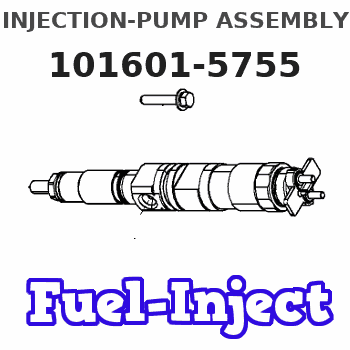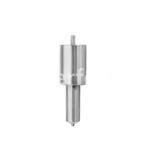Information injection-pump assembly
BOSCH
F 019 Z10 169
f019z10169
ZEXEL
101601-5755
1016015755
HINO
220007173A
220007173a

Rating:
Service parts 101601-5755 INJECTION-PUMP ASSEMBLY:
1.
_
7.
COUPLING PLATE
8.
_
9.
_
11.
Nozzle and Holder
12.
Open Pre:MPa(Kqf/cm2)
19.6{200}
15.
NOZZLE SET
Include in #1:
101601-5755
as INJECTION-PUMP ASSEMBLY
Include in #2:
104137-3012
as _
Cross reference number
Zexel num
Bosch num
Firm num
Name
101601-5755
F 019 Z10 169
220007173A HINO
INJECTION-PUMP ASSEMBLY
H07D-A * K
H07D-A * K
Information:
Fuel Recommendations
Caterpillar Diesel Engines are capable of burning a wide range of distillate fuels. The use of clean, stable blends of distillate fuel which meet the following requirements will provide quality engine service life. The fuels recommended for use in Caterpillar engines are normally No. 2-D diesel fuel and No. 2 fuel oil, although No. 1 grades are acceptable. The following fuel specifications are some of the worldwide fuels which also meet the requirements. The following fuel characteristics should be considered when procuring fuel for use in Caterpillar diesel engines.Cetane Number
The minimum cetane number required for average starting conditions for the direct injection engine is 40. A higher cetane value may be required for high altitude operation or cold weather starting.Filterability
Clean fuels should have no more than 0.1% of sediment and water. Storage of fuel for extended periods of time can cause fuel oxidation with solids forming, causing filtering problems.Pour Point
The pour point of the fuel should be at least 6°C (10°F) below the lowest ambient temperature at which the engines must start and operate. The lower pour point of No. 1 or No. 1-D fuel may be necessary in extremely cold weather.Cloud Point
The cloud point should be below the lowest ambient temperature at which the engines must start and operate to prevent the fuel filter elements from plugging with wax crystals. Refer to topic, Fuel Problems in Cold Weather Operation, for additional information.Sulfur
Fuels containing 0.5% or less sulfur may be used with normal crankcase oil drain intervals using API CD or CE performance oils. With sulfur above the 0.5% level, use API CD or CE oils with an ASTM D-2896 Total Base Number (TBN) of 20 times the fuel sulfur for normal oil drain intervals. Regular oil analysis (S*O*S) will provide information to monitor oil properties and engine wear metals to maintain successful engine protection and establish oil drain intervals.Viscosity
The viscosity of any fluid is a measure of resistance to flow. Fuel viscosity is important because it provides lubrication for fuel system components and also its effects on fuel atomization. The viscosity limits have been provided to meet both of these effects.Additives
Fuel additives are generally not recommended nor needed for the specified fuels listed. Cetane improvers can be used as necessary for the direct injection engine requirements. Biocides may be needed to eliminate microorganism growth in storage tanks. In cold conditions, treatment for entrained water may also be necessary.Consult your fuel supplier about the use of additives to prevent incompatibility among additives already in the fuel and the additives to be used. Other fuel types may be burned in the engine when economics or fuel availability dictate. Consult your Caterpillar dealer for more information and advice on any specific fuel.Fuel Sulfur Content
The percentage of sulfur in the fuel will affect the engine oil recommendations. Fuel sulfur is chemically changed during combustion to form both sulfurous and sulfuric acid. These acids chemically attack metal surfaces and cause corrosive wear.Certain additives used in lubricating oils contain alkaline compounds that
Caterpillar Diesel Engines are capable of burning a wide range of distillate fuels. The use of clean, stable blends of distillate fuel which meet the following requirements will provide quality engine service life. The fuels recommended for use in Caterpillar engines are normally No. 2-D diesel fuel and No. 2 fuel oil, although No. 1 grades are acceptable. The following fuel specifications are some of the worldwide fuels which also meet the requirements. The following fuel characteristics should be considered when procuring fuel for use in Caterpillar diesel engines.Cetane Number
The minimum cetane number required for average starting conditions for the direct injection engine is 40. A higher cetane value may be required for high altitude operation or cold weather starting.Filterability
Clean fuels should have no more than 0.1% of sediment and water. Storage of fuel for extended periods of time can cause fuel oxidation with solids forming, causing filtering problems.Pour Point
The pour point of the fuel should be at least 6°C (10°F) below the lowest ambient temperature at which the engines must start and operate. The lower pour point of No. 1 or No. 1-D fuel may be necessary in extremely cold weather.Cloud Point
The cloud point should be below the lowest ambient temperature at which the engines must start and operate to prevent the fuel filter elements from plugging with wax crystals. Refer to topic, Fuel Problems in Cold Weather Operation, for additional information.Sulfur
Fuels containing 0.5% or less sulfur may be used with normal crankcase oil drain intervals using API CD or CE performance oils. With sulfur above the 0.5% level, use API CD or CE oils with an ASTM D-2896 Total Base Number (TBN) of 20 times the fuel sulfur for normal oil drain intervals. Regular oil analysis (S*O*S) will provide information to monitor oil properties and engine wear metals to maintain successful engine protection and establish oil drain intervals.Viscosity
The viscosity of any fluid is a measure of resistance to flow. Fuel viscosity is important because it provides lubrication for fuel system components and also its effects on fuel atomization. The viscosity limits have been provided to meet both of these effects.Additives
Fuel additives are generally not recommended nor needed for the specified fuels listed. Cetane improvers can be used as necessary for the direct injection engine requirements. Biocides may be needed to eliminate microorganism growth in storage tanks. In cold conditions, treatment for entrained water may also be necessary.Consult your fuel supplier about the use of additives to prevent incompatibility among additives already in the fuel and the additives to be used. Other fuel types may be burned in the engine when economics or fuel availability dictate. Consult your Caterpillar dealer for more information and advice on any specific fuel.Fuel Sulfur Content
The percentage of sulfur in the fuel will affect the engine oil recommendations. Fuel sulfur is chemically changed during combustion to form both sulfurous and sulfuric acid. These acids chemically attack metal surfaces and cause corrosive wear.Certain additives used in lubricating oils contain alkaline compounds that
Have questions with 101601-5755?
Group cross 101601-5755 ZEXEL
Hino
101601-5755
F 019 Z10 169
220007173A
INJECTION-PUMP ASSEMBLY
H07D-A
H07D-A
